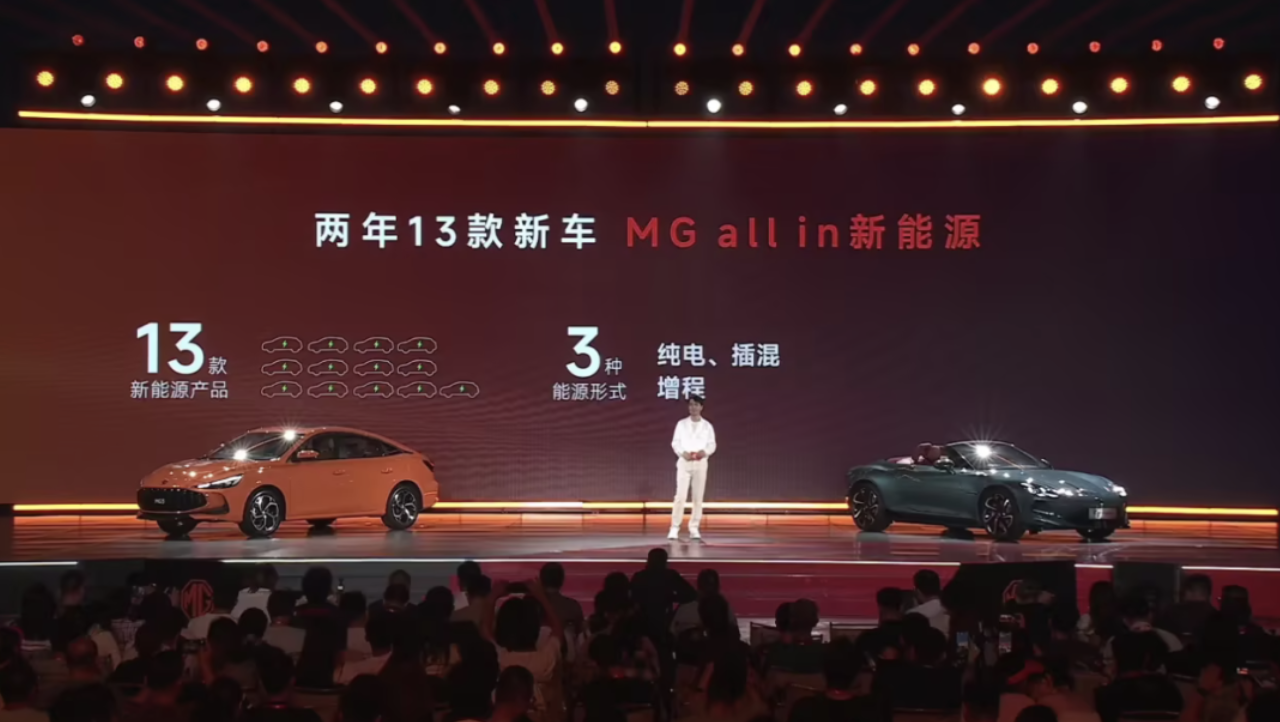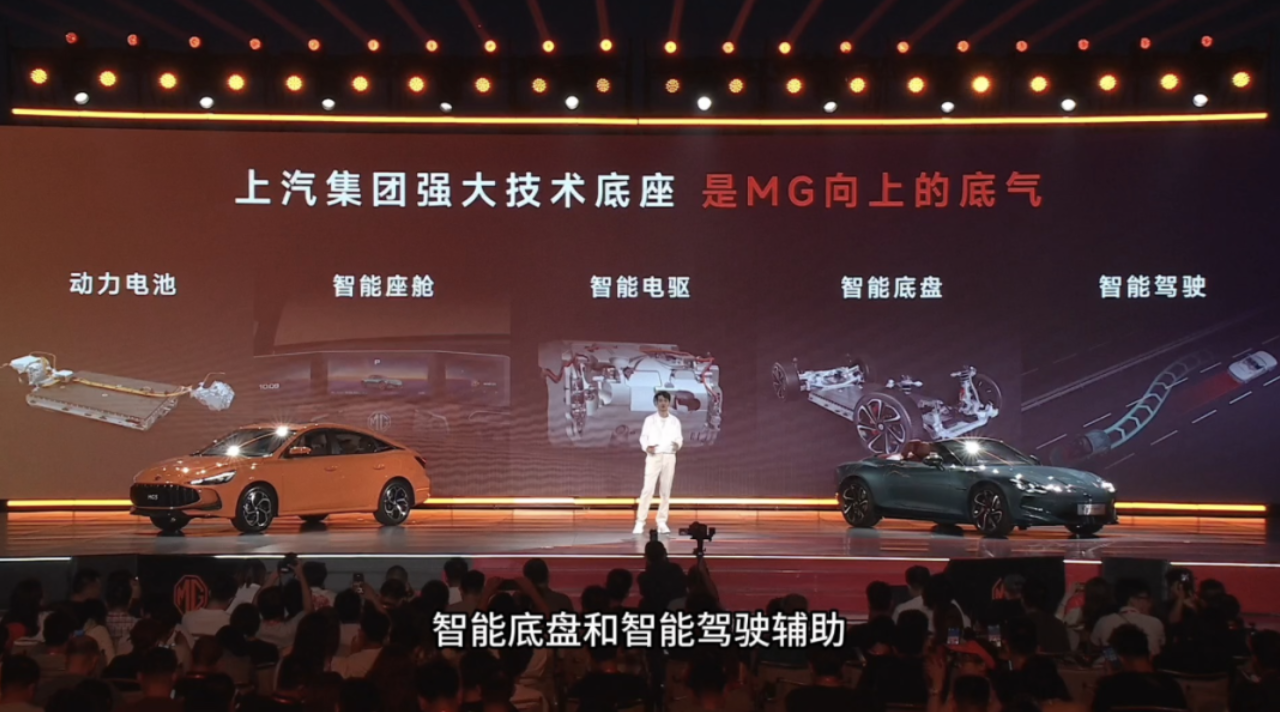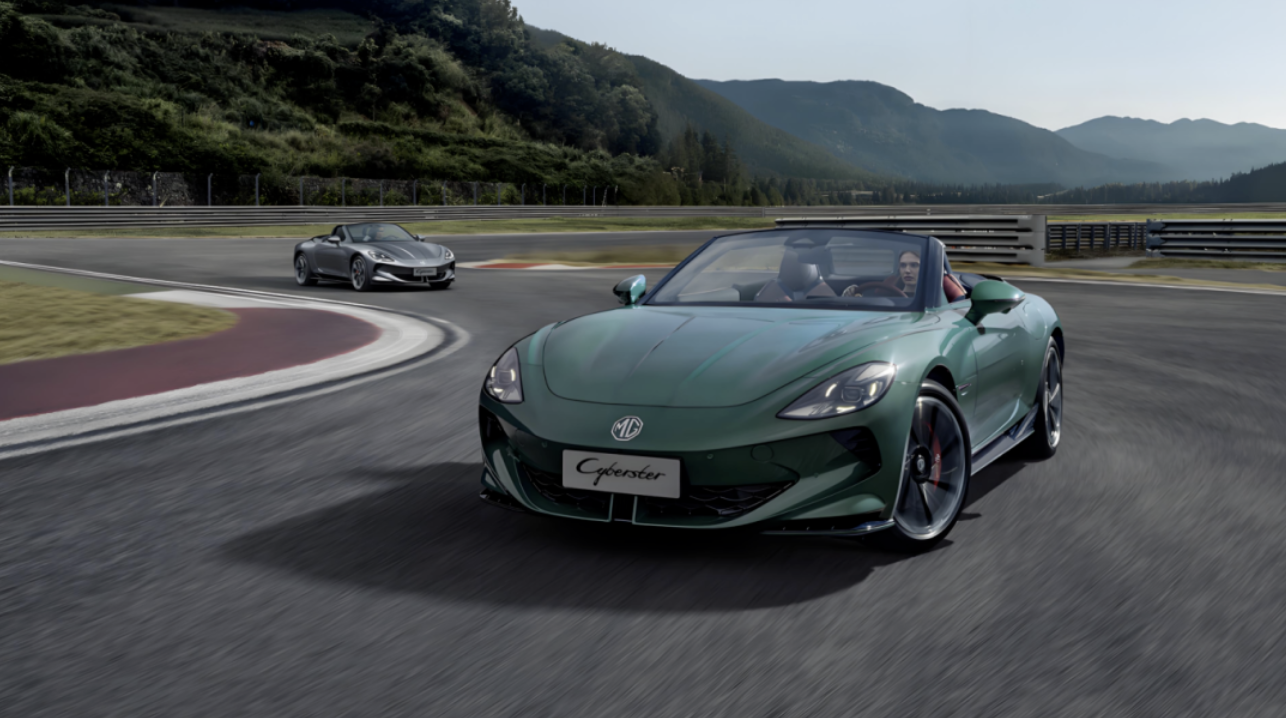In recent years, as new energy technology has rapidly advanced, many car manufacturers have chosen to embrace the times and switch tracks to dive into the wave of new energy. Some companies have successfully achieved a leap in the market through electrification, becoming the stars of the automotive market. In the midst of fierce competition, SAIC Group's MG brand has also announced an ambitious plan - 'All in New Energy.' Over the next two years, MG will launch 13 new energy products covering pure electric, plug-in hybrid, and range-extended technologies across various categories, including sedans, SUVs, and sports cars. This 'All in New Energy' declaration from MG, a brand established in 1924 and known for its racing heritage, is noteworthy. After being acquired by SAIC, MG has seen a resurgence in the Chinese market. However, as the new energy wave reshapes the automotive landscape, MG's development trajectory reveals a significant 'temperature difference' between domestic and international markets. On one hand, MG has been thriving in overseas markets as an important representative of 'Made in China'; on the other hand, its brand presence and sales in the domestic market remain underutilized. This imbalance reflects both the stage of its globalization process and reveals deeper challenges in strategic positioning, product alignment, and localized operations. Therefore, it is these challenges and potential opportunities that have prompted MG to make significant strategic adjustments.
MG aims to maintain its fuel vehicle lineup while fully committing to new energy. Given the current influence of new energy vehicles, especially in the Chinese market where the market share has surpassed 50%, MG's decision to pursue 'All in New Energy' is understandable. However, MG has not abandoned fuel vehicles entirely, as they still account for a significant portion of its sales, with models like MG5 and MG7 performing well. The newly appointed MG General Manager Chen Cui emphasized in interviews that 'without the present, there will be no future.' This seemingly contradictory 'dual-track' strategy is MG's way of seeking breakthroughs amidst the changing times. Chen believes, 'MG must not only safeguard the present but also have the courage to invest in securing the future.' The core of this strategy is undoubtedly pragmatism, as sales serve as the cash flow foundation supporting a company’s normal operations, employee livelihoods, channel networks, and supplier systems. Abruptly severing this lifeline would be tantamount to self-destruction. The profits from fuel vehicles are essential for MG to support substantial investments in R&D for new energy, charging network development, and new service systems.
Moreover, the current new energy penetration rate in the Chinese automotive market has exceeded 50% and continues to rise, with policy guidance, consumer trends, and technological iterations pointing towards an electrified future. If MG cannot quickly and decisively establish a strong product matrix, technical identity, and brand recognition in the new energy sector, being eliminated from the market would only be a matter of time. The intensive launch of 13 new vehicles reflects MG's determination to seize market share in new energy through a 'saturation attack.' Chen further indicated that 'we do not rule out the introduction of HEV models; it all depends on future customer choices, and if the demand is there, we can adapt accordingly.' Regarding the overall technical direction, Yu Jingmin, the Executive Vice President of SAIC Group's Passenger Vehicle Company, noted that 'Europe serves as MG's base, and we have gasoline, HEV, and pure electric models. The MG HS fuel vehicle has been a monthly champion in the UK market at times. MG's All in New Energy strategy brings some impact to the Chinese market.' As Yu pointed out, different technological models significantly contribute to MG's globalization journey, and launching 13 new energy vehicles within two years will provide MG with a competitive edge in the Chinese market.
Simultaneously, MG, with its deep international background, has broad recognition and sales networks in various global markets. While diving into the largest and most competitive new energy market in China, MG can leverage the products and technologies honed in this market for overseas applications, particularly in Europe, Australia, New Zealand, and Southeast Asia, where there is a growing recognition of the MG brand and accelerated electrification.
The question remains whether MG can accelerate its growth. The adoption of multiple technical routes demonstrates MG's understanding of market diversity. For example, pure electric models cater to pioneering users and policy high grounds; plug-in hybrids address range anxiety, providing a smooth transition for fuel vehicle users; and range extenders offer an alternative experience devoid of range concerns. This 'there's always a model for you' strategy maximizes coverage across different consumer needs. However, implementing such strategic visions is not without its challenges. Industry insiders express concerns about how MG will ensure positive breakthroughs on the new energy track with the rollout of 13 vehicles over two years. There is validity to these concerns. MG's response is to embrace change with courage. The ambitious plan of launching 13 models in two years is unprecedented in the industry. Standing on the shoulders of a giant like SAIC, MG can leverage technological reserves in areas such as battery technology, smart cabins, and intelligent chassis to bolster its confidence in the new energy sector.
Yu Jingmin believes that the MG product matrix, ranging from the high-end MG Cyberster to entry-level MG5, showcases differentiation. Additionally, MG's strategic transformation has introduced a 'killer feature' - a collaboration with OPPO to enhance in-car connectivity and provide users with a continuously evolving smart interaction experience. The upcoming 2025 MG4 will first realize OPPO’s full capabilities in vehicle connectivity. As a century-old automotive brand, MG has established multiple world speed records during the internal combustion engine era and has provided extreme driving experiences for performance enthusiasts. The pursuit of speed and driving pleasure has become a hallmark of MG's century-long legacy. Now, confronted with the global wave of automotive electrification, MG, at 101 years old, is embarking on its second century with an 'All in New Energy' posture. The 'All in New Energy' declaration is undoubtedly a desperate counterattack against the risk of being left behind. The plan for 13 new vehicles reflects MG's emergence from the strength of the SAIC system, and is a necessary arsenal in the fierce competition for consumer mindshare. However, MG faces a challenging landscape, particularly as BYD continues to lead with its vertically integrated advantages and extensive new energy product matrix; Great Wall differentiates itself with core technologies like Hi4 intelligent all-wheel drive; and Geely rapidly expands its electrification product line supported by a vast architecture and sub-brand synergy. There is much for MG to accomplish, particularly in ensuring competitive strength in the fuel vehicle market while maintaining high levels of investment in R&D, production, and marketing for new energy. This will test the strategic resolve and execution capabilities of its management. Furthermore, MG must clearly convey the dual identity of being both a performance brand with a racing heritage and a forward-looking intelligent electric brand to consumers, avoiding falling into the gray area of 'not pure enough' recognition. A brand renewal requires systemic narratives and continuous communication with users. Additionally, transitioning from traditional fuel vehicle thinking to an electric and intelligent user-centered approach necessitates profound organizational transformations in processes, collaboration models, and talent structures. Breaking down departmental barriers and establishing a more agile, software, and experience-oriented team culture is essential for successful transformation. The aggressive pace of launching 13 new vehicles over two years poses a significant systemic engineering challenge. Ensuring each product possesses sufficient market competitiveness, clear positioning, and avoids internal competition, while also maintaining quality, delivery, and service, is a monumental task. As the fuel vehicle market becomes increasingly competitive and the new energy race intensifies, MG's success will depend not only on leveraging the 13 new vehicles to reshape market dynamics but also on its ability to accelerate its growth in this dual-track approach.
SAIC's MG Brand Announces Ambitious 'All in New Energy' Strategy

Images





Share this post on: